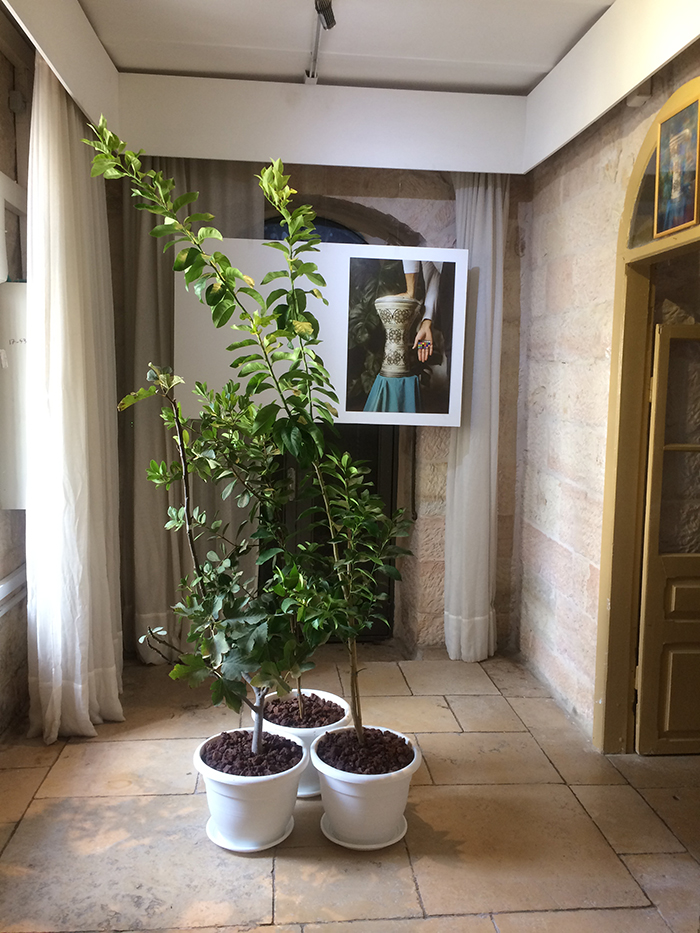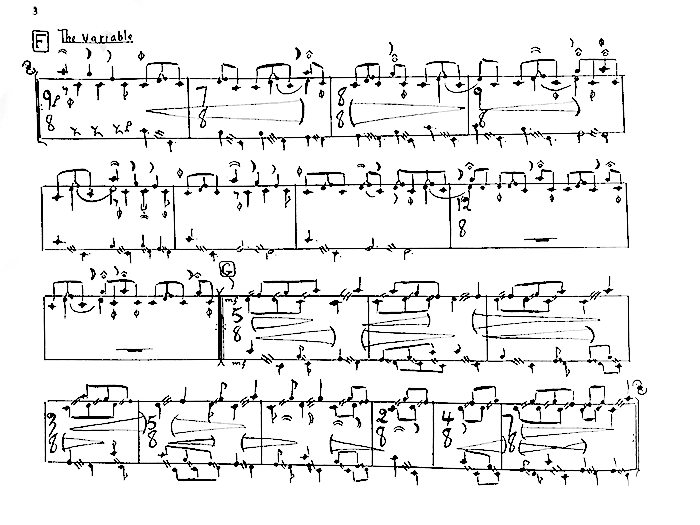| |
Study for Sonic No. 7 & No. 10
2018, sound, text, photos, lemon, guava, and fig trees
This installation is made up of a sound recording, text, photos, and plants – notes for learning how to perform the score Sonic No. 7 for solo derebucca, written by Halim El Dabh in 1955. The sound recording is an excerpt from the score, a very loose interpretation of the Variable, section G. The text is a coda for this recording, lyrics for a mental karaoke to sing along with in your head. Much like the Sonic score is an exercise in fingertip gymnastics, the text is an exercise in reaching the limits of interpretation in written improvisation. The plants draw attention to the deep-rooted correlation between the agricultural and sono-cultural embedded within the score.
To hear an excerpt from the score click here.
|

Installation view from the group show Debt, at Sakakini Cultural Center in Ramallah.
EXCERPT:
4. In Leiyla and the Poet, Halim introduced the world to that special and loving relationship of drums in electronic music. Quite prominent throughout the recording is the dumbek, or derbeka, or derabucca (as it was spelled in the original 1955 score), it might also be called the goblet drum, or tabla, and hereafter will be referred to as the DOOOM, because of its signature bass sound and because the drum belongs to no language, it was with us before language.
The earliest physical evidence we have of the DOOOM dates back to 1100 BC ancient Babylonia. In over 3,000 years of existence, Halim’s score, Sonic No. 7 & No. 10, was the first, and maybe only, ever written for the solo DOOOM. His approach to playing the drum was holistic, requiring a technique that uses every part of the drum and hand, and his score is written in such a way that every gesture is denoted by an elaborate symbol system. He wrote an entirely separate book detailing the symbols, explaining the technique required to perform the score.
In the score’s instructions, Halim calls attention to the music’s three sections: the constant, the variable, and the finale. He notes that the constant should be played exactly as written, the variable is written to allow for improvisation, and the finale can be played exactly as written or if the performer feels moved, caught in the spirit of the piece, may improvise upon it as well. What I want to address is the variable, how far can an improvisation be extended, or how variable can you variable? At what point in an improvisation does the thing improvised upon, the generative riff, get lost, become something else, its own thing. Can it ever truly get detached?


|




